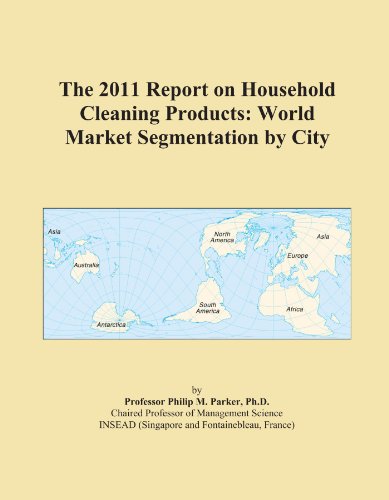Household Cleaning Product. Clean Homes. Cleaning Window Screen.
Household Cleaning Product
- (Household cleaner) A detergent is a material used for cleaning. The term is sometimes used to differentiate between soap and other surfactants used for cleaning.
- an artifact that has been created by someone or some process; "they improve their product every year"; "they export most of their agricultural production"
- An article or substance that is manufactured or refined for sale
- a quantity obtained by multiplication; "the product of 2 and 3 is 6"
- A thing or person that is the result of an action or process
- merchandise: commodities offered for sale; "good business depends on having good merchandise"; "that store offers a variety of products"
- A substance produced during a natural, chemical, or manufacturing process
The 2011-2016 Outlook for Household Cleaning Products in Japan

This econometric study covers the latent demand outlook for household cleaning products across the prefectures and cities of Japan. Latent demand (in millions of U.S. dollars), or potential industry earnings (P.I.E.) estimates are given across some 1,000 cities in Japan. For each city in question, the percent share the city is of it's prefecture and of Japan is reported. These comparative benchmarks allow the reader to quickly gauge a city vis-a-vis others. This statistical approach can prove very useful to distribution and/or sales force strategies. Using econometric models which project fundamental economic dynamics within each prefecture and city, latent demand estimates are created for household cleaning products. This report does not discuss the specific players in the market serving the latent demand, nor specific details at the product level. The study also does not consider short-term cyclicalities that might affect realized sales. The study, therefore, is strategic in nature, taking an aggregate and long-run view, irrespective of the players or products involved.
This study does not report actual sales data (which are simply unavailable, in a comparable or consistent manner in virtually all of the cities in Japan). This study gives, however, my estimates for the latent demand, or the P.I.E., for household cleaning products in Japan. It also shows how the P.I.E. is divided and concentrated across the cities and regional markets of Japan. For each prefecture, I also show my estimates of how the P.I.E. grows over time. In order to make these estimates, a multi-stage methodology was employed that is often taught in courses on strategic planning at graduate schools of business.

81% (16)
vintage household products
Ive actually left behind some cooler stuff than this - my favorites would have to be the Ivory and the Cinch bottles - most of this stuff dates from the 1960s and 1970s - someone should stop by and load up on this stuff - I have boxes and boxes and boxes and boxes and......
Day 30 / 365 Project : Chores (under sink cleanup)
No one helped me clean the space under the sink, but Eddy did come by to inspect it before I closed the doors.
Chore:
A small piece of domestic work ; little odd , detached , or miscellaneous pieces of business.

household cleaning product

This report was created for global strategic planners who cannot be content with traditional methods of segmenting world markets. With the advent of a "borderless world", cities become a more important criteria in prioritizing markets, as opposed to regions, continents, or countries. This report covers the top 2000 cities in over 200 countries. It does so by reporting the estimated market size (in terms of latent demand) for each major city of the world. It then ranks these cities and reports them in terms of their size as a percent of the country where they are located, their geographic region (e.g. Africa, Asia, Europe, Middle East, North America, Latin America), and the total world market.
In performing various economic analyses for its clients, I have been occasionally asked to investigate the market potential for various products and services across cities. The purpose of the studies is to understand the density of demand within a country and the extent to which a city might be used as a point of distribution within its region. From an economic perspective, however, a city does not represent a population within rigid geographical boundaries. To an economist or strategic planner, a city represents an area of dominant influence over markets in adjacent areas. This influence varies from one industry to another, but also from one period of time to another.
In what follows, I summarize the economic potential for the world's major cities for "household cleaning products" for the year 2011. The goal of this report is to report my findings on the real economic potential, or what an economist calls the latent demand, represented by a city when defined as an area of dominant influence. The reader needs to realize that latent demand may or may not represent real sales.
Similar posts:
home cleaning businesses
how to clean car engine compartment
pentax lens cleaning cloth
clean on the inside clean on the out
clean tips
clean house messiest house 2
clean and simple cleaning
registry cleaning program
cleaning tile floors and grout
